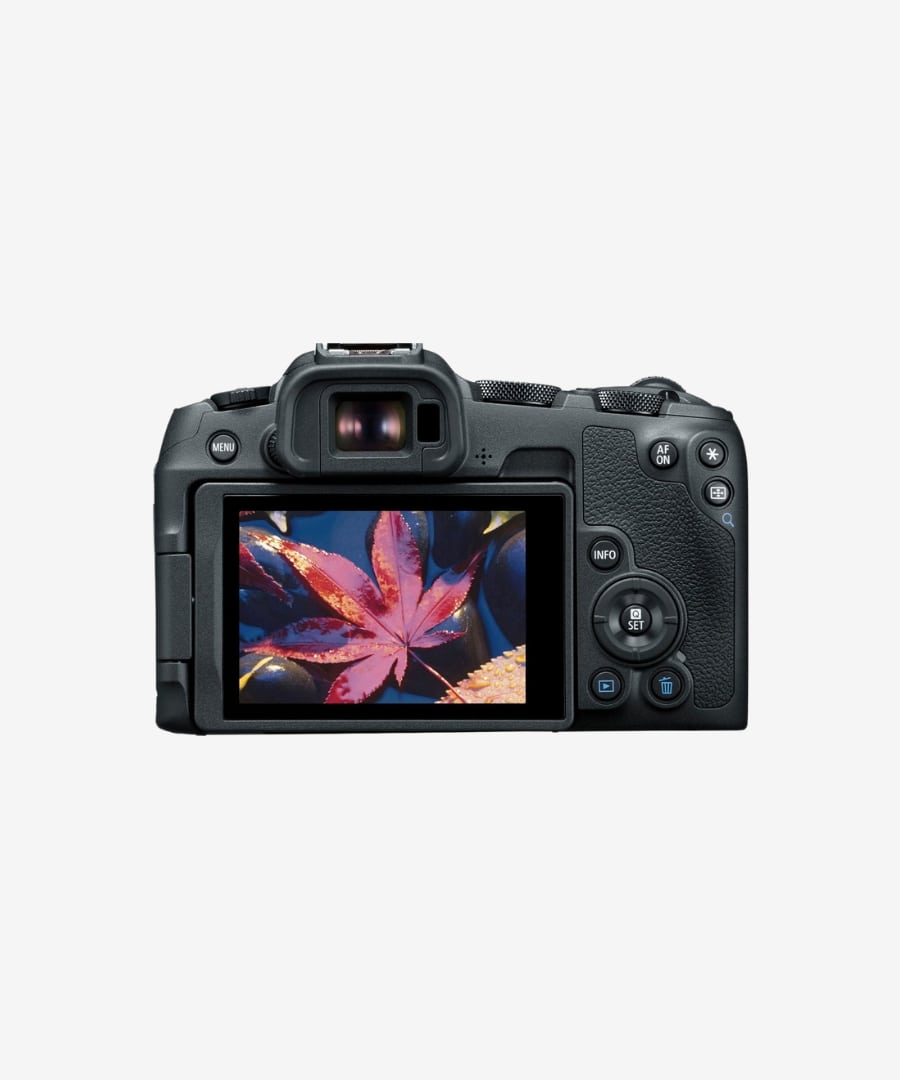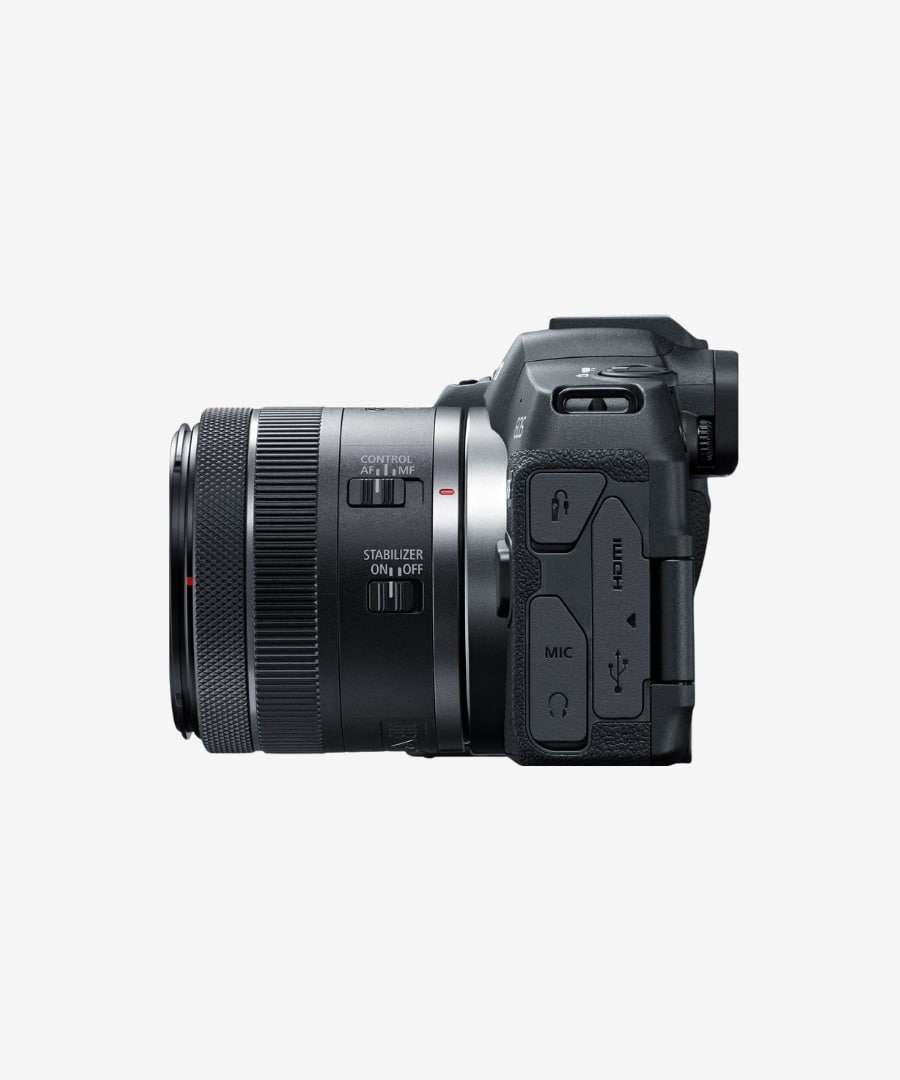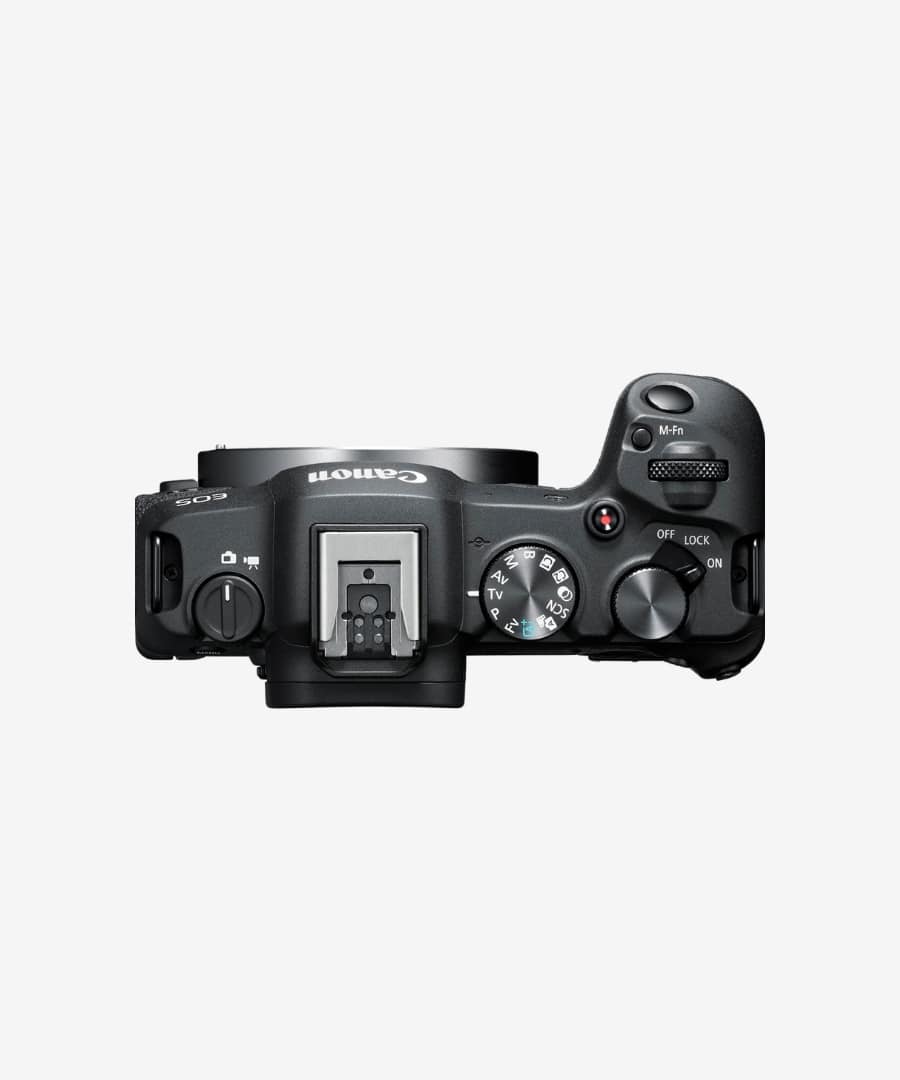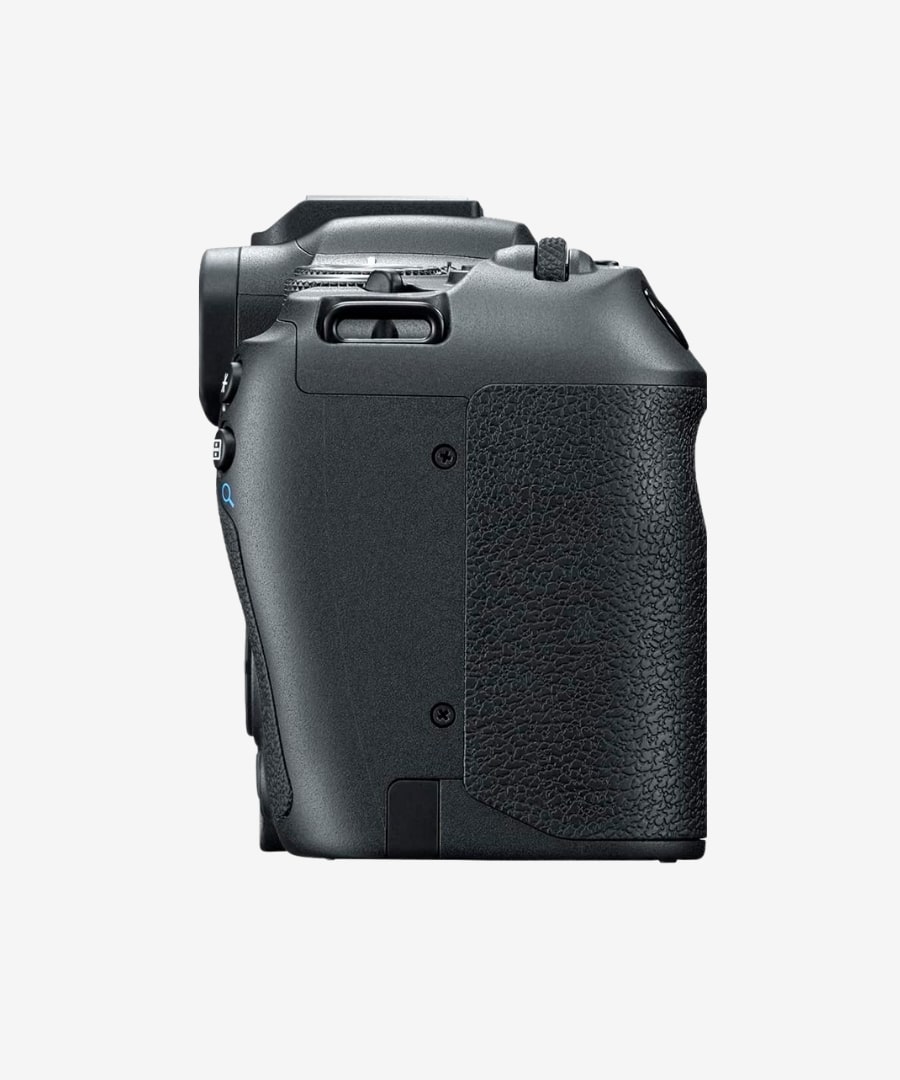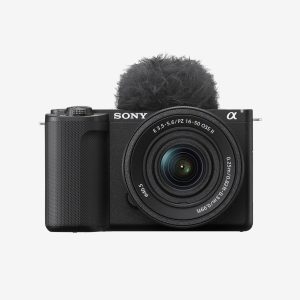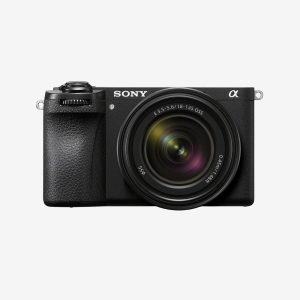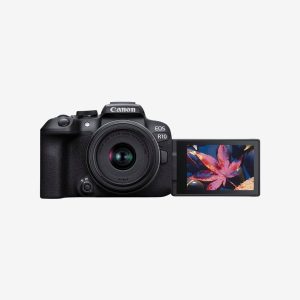The Canon EOS R8 has a 24.2-megapixel full-frame CMOS sensor for an ideal balance of detail, speed, and low-light performance for both photos and videos. This sensor is paired with Canon’s advanced DIGIC X image processor to provide swift and efficient image processing. The camera’s autofocus system is truly remarkable, featuring Dual Pixel CMOS AF II technology. This system covers approximately 100% of the frame both horizontally and vertically, giving you unparalleled composition flexibility.
With up to 1053 AF zones for automatic selection and 4897 manually selectable AF positions for still photos to give you precise control over your focus points. Canon R8 let you achieve an astounding 40 fps in high-speed continuous shooting mode. For situations where you need to eliminate rolling shutter effects, the electronic first curtain shutter still delivers a respectable 6 fps. Additionally, the camera offers a 30 fps RAW burst mode with a 0.5-second pre-shot capture, allowing you to catch fleeting moments even before you fully press the shutter button.
Canon R8 Design and Ergonomics
The Canon EOS R8’s design is compact and lightweight. Weighing just 461g (including battery and memory card) and measuring 132.5 x 86.1 x 70.0mm, R8’s ergonomics are truly impressive. Canon has made R8 a camera that’s comfortable for both larger and smaller hands. The grip is excellent, and your fingers will rest comfortably without feeling cramped.
You’ll find two control wheels on the camera body, one behind the shutter button and another at the back of the top plate. These wheels offer familiar and substantial movement to provide precise control over your settings. The camera features a mode dial on the right side of the top plate, a record button and an M-Fn button. On the left side of the viewfinder, you’ll find a Stills/Video switch to quickly transition between different shooting modes with separate control setups.

Image Sensor Performance
The Canon EOS R8 has a 24.2-megapixel full-frame CMOS sensor, the same one found in the higher-end EOS R6 Mark II. The R8’s dynamic range is great. At base ISO 100, it achieves a maximum of nearly 15 stops (14.7 EV), rivaling the high-end EOS R5 and R3. You can recover both shadows and highlights in post-processing to get better quality final images. The sensor’s color depth is another strong point, matching the EOS R5 and R3 at 24.5 bits. In color sensitivity tests, the R8 performs exceptionally well at low ISOs (50-200). Images remain extremely clean through ISO 3200, with an almost imperceptible amount of noise.
Canon’s modern noise reduction technology keeps fine detail in the picture longer at higher ISOs compared to some competitors. While there might be slightly more noise in high ISO pictures, it looks more realistic and less painterly, which is beneficial for night photography or JPEG shooters.

Canon R8 Video Quality
Canon EOS R8 is ready to impress with its uncropped 4K video at up to 60 frames per second which is oversampled from 6K. It produces detailed and sharp footage in any situation even when filming fast-moving subjects or slowing down your footage in post-production. The R8’s can shoot in 10-bit color depth with a broader color palette than 8-bit footage. It pushes your color grading further without compromising image quality. For more advanced color options it supports both Canon Log 3 and HDR PQ. Canon Log 3 enables a consistent standard for color grading and the HDR PQ creates video with a higher dynamic range.
The camera’s video autofocus performance is best in the class due to the Dual Pixel CMOS AF technology. This ensures smooth and accurate focus transitions, enhancing the overall quality of your footage. You also have the option to use Movie Servo AF, accessible through the AF menu, for continuous autofocus during video recording.
Autofocus Technology
The Canon EOS R8 comes with the outstanding AF from the higher-end EOS R6 Mark II. This deep learning AI-based autofocus let you take sharp photos and make videos easier than ever. The camera has the Canon’s Dual Pixel CMOS AF II focus system with approximately 100% of the frame both horizontally and vertically. The camera’s ability to automatically recognize and track subjects as they move across the frame is perfect. The EOS R8 autofocus can track:
- People (Body / Face / Eye)
- Animals (Dogs / Cats / Birds / Horses)
- Vehicles (Motorsport cars and motorcycles / Aircraft / Trains)
- Auto (auto-selects from the above groups)
This expanded subject detection focuses on composition rather than worrying about maintaining focus. The “Auto” mode is particularly useful, as it enables the camera to switch detection algorithms automatically when it detects a subject.
The autofocus performance of the EOS R8 is truly remarkable in low-light conditions. It can focus in light as low as -6.5 EV when used with f/1.2 lenses, giving you a significant advantage when shooting in dimly lit environments.

Display and Viewfinder
The Canon EOS R8 offers great viewing experience with its electronic viewfinder (EVF) and articulating LCD screen. The EVF is an OLED display with a resolution of 2.36 million dots, providing a clear and detailed view of your scene. The EVF refreshes at 60fps by default, but you have the option to increase this to 120fps for a more responsive and fluid viewing experience. This higher refresh rate is particularly beneficial when shooting fast-moving subjects or panning to reduce lag and provide a more natural view. However, keep in mind that using the 120fps setting will have an impact on battery life.
The rear side of the camera is a 3-inch articulating LCD touchscreen with a resolution of 1.62 million dots. This fully articulating design is perfect to view your shots from various angles like from the front of the camera. The touchscreen’s performance is a standout feature due to quick response times and good sensitivity holding true here.

Canon R8 Handling and Controls
Canon EOS R8’s impressive ergonomics are the best among full-frame cameras. Despite its compact size, the camera feels comfortable in both large and small hands. The R8’s control layout is well-thought-out due to the two main control wheels. The first is located behind the shutter button, while the second is at the back of the top plate, connected to the On/LOCK/Off lever. The movement of these wheels feels familiar and substantial, providing precise control over your settings.
On the left side of the viewfinder, there is a Stills/Video switch that helps you have completely different setups for your video controls, including separate customization sets for buttons and wheels. The right side of the top plate houses a mode dial, along with the record button and an M-Fn button that you can customize to your liking.
Customization and User Experience
You can register current camera settings, including shooting, menu, and Custom Function settings, as Custom shooting modes assigned to C1 and C2 on the mode dial. To set up a Custom shooting mode:
- Select [Custom shooting mode (C1, C2)] in the menu.
- Choose [Register settings].
- Select the desired Custom shooting mode (C1 or C2).
- Configure your preferred settings.
- Save the settings.
Once saved, your registered shooting mode will be indicated by a Custom shooting mode icon ([] or []) in still photo shooting, or [] and [] in movie recording.
You can further customize the camera by assigning frequently used functions to the dials. The Quick Control screen is also customizable, allowing you to add, remove, or rearrange items for quick access to your most-used settings.
For more advanced customization, the R8 provides options to:
- Reverse the turning direction of control dials
- Adjust the shutter speed and aperture value ranges
- Assign functions to camera buttons separately for still photos and movies

Canon R8 Image Quality
The Canon EOS R8 image quality is superb, thanks to its 24.2-megapixel full-frame sensor. This sensor, which is the same as the one found in the higher-end EOS R6 Mark II, has outstanding performance across all shooting scenarios. You’ll find that the R8’s image quality is competitive among Canon’s recent sensors, with a dynamic range performance that’s essentially identical to the EOS R6 Mark II. The R8 can achieve a maximum of 11.58 stops of dynamic range.
Canon’s color science remains excellent when it comes to color reproduction. The default JPEG color profile strikes a good balance, avoiding oversaturation along providing enough pop to make images visually appealing. The R8’s low-light performance is excellent too. You’ll experience that images remain extremely clean through ISO 3200, with an almost imperceptible amount of noise. Even at higher ISOs, the R8 performs admirably.

Battery
The Canon EOS R8 uses the smaller LP-E17 battery pack with a capacity of 1040mAh. Canon rates the R8’s battery life at approximately 200 shots per charge. However, your actual mileage may vary depending on your shooting conditions and camera settings. For video recording, the R8 is capable of recording up to 120 minutes of 4K video.

Connectivity, Storage and Files
The Canon EOS R8 has multiple connectivity features to enhance your shooting experience. On the left side of the camera, you’ll find a USB Type-C port for computer communication and smartphone connectivity. This port also supports USB battery charging and a camera power supply, making it versatile. For video output, the R8 features a micro-HDMI port. While this allows for 4K 60p output and HDR PQ video output to HDR TVs. Audio connectivity is well-catered for with a 3.5mm microphone jack and a similar headphone monitoring jack to record and monitor high-quality audio during video recording. The hot shoe on top of the camera supports certain microphones for digital audio input.
It features built-in 2.4GHz Wi-Fi (IEEE 802.11b/g/n) and Bluetooth 4.2 for blazing fast and seamless communication with smartphones and tablets via the Canon Camera Connect app. Transfer images and control the camera remotely. You can also upload images directly to the cloud using the image.canon service. For file management, the R8 is equipped with a single UHS-II compatible SD card slot. The camera supports various file formats including JPEG, HEIF, RAW, and C-RAW for still images, and MP4 for video files. A unique feature is the Raw Burst mode, which saves multiple shots as a single file, streamlining your workflow when recording the action scenes.



